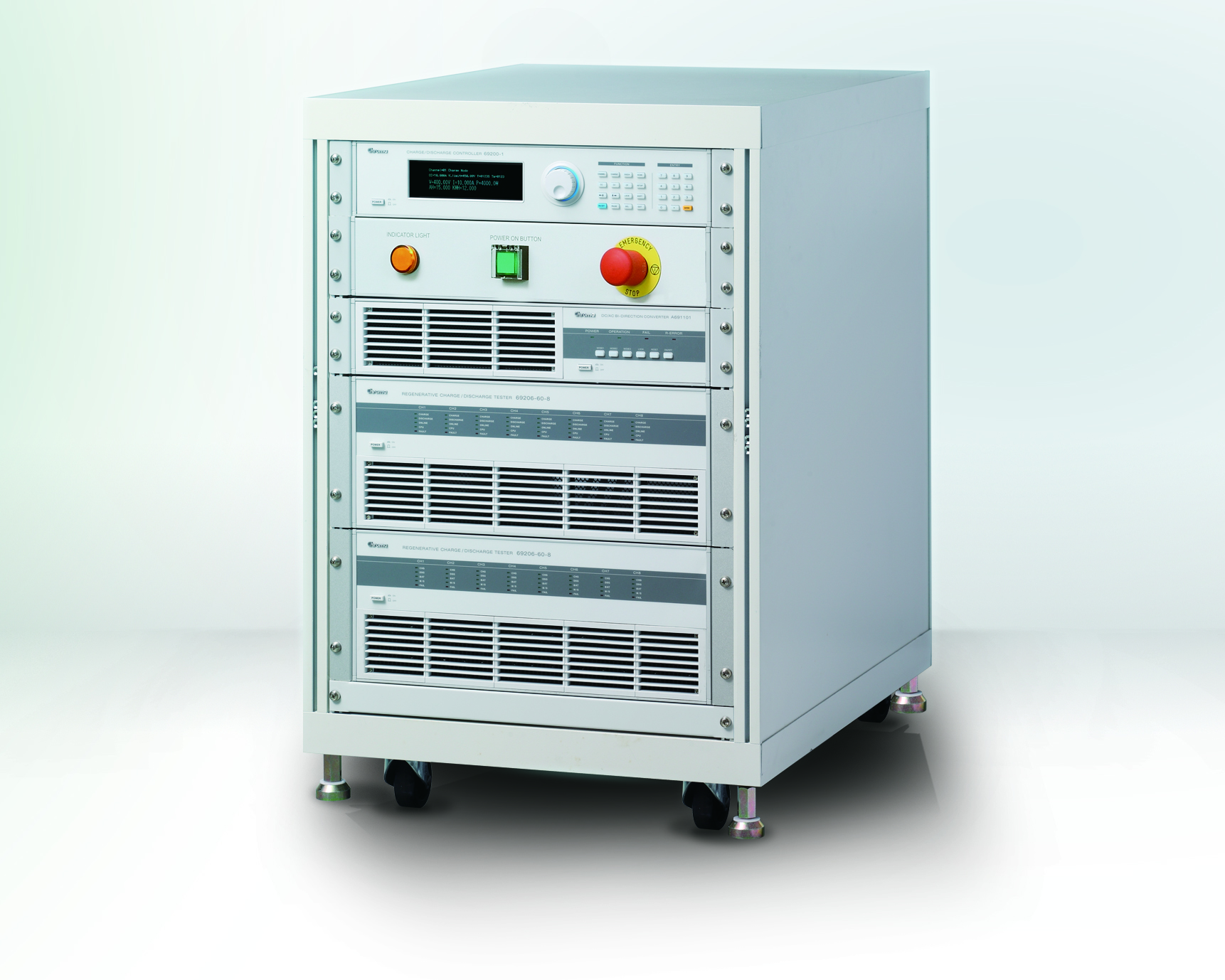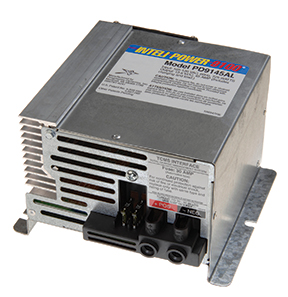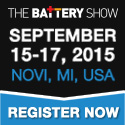 |
August 2015
|
 |
|
|
 |
Feature Articles
|
|
 |
 |
How to Use an SMU Instrument in Charge/Discharge Cycling for Battery Characterization
Mary Anne Tupta • Keithley Instruments, a Tektronix Company
Rechargeable batteries power a rapidly expanding range of electronic devices, from laptops and tablets to mobile phones and wearable health-monitoring devices. When purchasing these devices, consumers typically take a hard look at battery life and recharge times; operating time is often a deciding factor in the purchase of a mobile device. As a result, researchers are studying ways to increase battery life and decrease the cost of rechargeable batteries. <read more>
Five Building Blocks of Self-Powered Wireless Sensor Nodes
Niranjan Pathare, Battery Management Solutions Marketing • Texas Instruments
Will Cooper, MSP Microcontroller Product Marketing • Texas Instruments
Today, autonomous sensors are in use for a variety of applications. Typically found in smart buildings and factories, these sensing applications include humidity, temperature, and chemical gas monitoring. They are often placed in remote locations where line power is unavailable, so rely heavily on battery power to function. In order to provide dependable operation, batteries have to be changed often, adding to the total cost of ownership. Ownership cost includes expensive labor needed to change the batteries during routine maintenance. <read more>
|
|
|
| |
 |
|
| |
Sponsored Announcement |
 |
High Precision Battery Test System Regenerates Battery Discharge Back to the Mains
 Chroma’s 17020 System is a high precision, regenerative solution for secondary battery module and pack testing. Accurate source and measurement performs exact, reliable testing critical for incoming or outgoing inspection, capacity, performance, production and qualification testing. The system regenerates battery discharge and recycles the energy either to channels performing a charging function or back to the utility mains reducing cost of operation and thermal foot print. Chroma’s 17020 System is a high precision, regenerative solution for secondary battery module and pack testing. Accurate source and measurement performs exact, reliable testing critical for incoming or outgoing inspection, capacity, performance, production and qualification testing. The system regenerates battery discharge and recycles the energy either to channels performing a charging function or back to the utility mains reducing cost of operation and thermal foot print.
The 17020 system’s independent channels supports dedicated charge/discharge tests on multiple battery packs each featuring discrete test characteristics. Channels can be paralleled to support higher current requirements providing flexibility between high channel count and high current testing. Charge/discharge mode simulates real world conditions and creates seamless transitions with a rapid 10mS conversion.
Flexible programming functions coupled with Battery Pro Software allows user to create cycling tests from basic charge or discharge, to complex drive cycle testing. Battery Pro's features allow quick and intuitive test development eliminating the need for programming.
|
 |
 |
| |
New Products |
| |
 Lithium-Ion Battery Converter/Charger Lithium-Ion Battery Converter/Charger
A lithium-ion battery converter/charger, the Inteli-Power 9100L series, is available from Progressive Dynamics, Inc. These 12 volt and 24 volt lithium-ion battery converter/chargers are designed to meet the stringent voltages required for properly charging and maintaining lithium batteries. Lithium-ion batteries require special balancing circuits and chargers to prevent overcharging a cell or discharging too much.
Standard features of the Inteli-Power 9100L series converter/chargers include reverse battery protection, electronic current limiting, low line and high voltage protection and a variable speed intelligent cooling fan. Units also deliver filtered DC power to the lithium-ion battery to ensure the built-in electronic balancing circuits operate properly. Output voltage can be factory adjusted to meet OEM requirements for various lithium-ion battery chemistries and voltages.
These converter/chargers are designed for lithium-ion batteries, that typically store three to four times the energy of a lead/acid battery within the same space, with less weight. Contact Progressive Dynamics, Inc. for more information.
Sense Smart Electrolyte Sensor Valve Takes The Guesswork Out of Watering Batteries
Battery maintenance just got easier with the new Sense Smart Electrolyte Sensor Valve, a single replacement valve with a built-in probe and LED indicator that lets operators know when a set of batteries require watering. <read more>
Panasonic Introduces Low Temperature Nickel Metal Hydride Battery
Panasonic Corp. has developed a low temperature Nickel Metal Hydride battery (BK250A, with an ambient discharge range of -30°C to 65°C). This battery is suitable for applications requiring performance at low temperatures. This product is well suited for a variety of markets and applications, such as two-way radio, locating devices and security. <read more>
See More New Products Online
Batteries • Charging • ICs & Semiconductors • Components • Testing
|
| |
Industry News |
| |
NASA Selects Proposals to Build Better Batteries for Space Exploration
NASA's Game Changing Development (GCD) program has selected two proposals for Phase II awards targeted toward developing new energy storage technologies to replace the battery systems currently used by America's space program. <read more>
“Yolks” and “Shells” Improve Rechargeable Batteries
One big problem faced by electrodes in rechargeable batteries, as they go through repeated cycles of charging and discharging, is that they must expand and shrink during each cycle, sometimes doubling in volume, and then shrinking back. This can lead to repeated shedding and reformation of its “skin” layer that consumes lithium irreversibly, degrading the battery’s performance over time. <read more>
3D-Printed Graphene Batteries Could Boost Renewable Energy
Professor Craig Banks, from Manchester Metropolitan University, is leading a new project to develop a desktop printer to create batteries, supercapacitors and energy storage devices for phones, tablets and solar, wind and wave power storage. Researchers are analyzing new techniques for rapid 3D printing with conductive graphene ink to create the batteries, funded from the EPSRC. By incorporating graphene ink and creating novel 3D structures, it should increase the charge storage of batteries to meet possible future demands. <read more>
ASU Team Fuses Art, Engineering to Create Stretchable Batteries
Origami, the centuries-old Japanese paper-folding art, has inspired recent designs for flexible energy-storage technology. But energy-storage device architecture based on origami patterns has so far been able to yield batteries that can change only from simple folded to unfolded positions. They can flex, but not actually stretch. <read more>
Lithium Power Adds More Battery Management System Design Teams to Support Robot Manufacturers
Lithium Power, Inc. is doubling its commitment to support the designers of robots and other mobile mechanical devices. Dedicated design teams have been placed in their design center to foster interactive innovation and cross-functional creativity. <read more>
|
| |

|
|

|
Event Listings |

|

|
|

|

|
|

|

|
 The Battery Show The Battery Show
September 15-17
Novi, Mich.
Taking place September 15-17, 2015, in Novi, Detroit, Michigan, The Battery Show 2015 is the premier showcase of the latest advanced battery technology. The exhibition hall offers a platform to launch new products, make new contacts and maintain existing relationships. With more qualified buyers and decision makers than any other event in North America, The Battery Show 2015 is the key to unlocking your future business opportunities.
The Battery Show is attended by technical leaders, scientists, engineers, project leaders, buyers and senior executives concerned with advanced energy storage and will host the very latest advanced battery solutions for electric & hybrid vehicles, utility & renewable energy support, portable electronics, medical technology, military and telecommunications.
|

|
|
Contact Us |
|
|
Submit editorial content to Shannon Given at 608-351-9245
For advertising information contact William Massey at 720-528-3770 x125
Webcom Communications • 7355 E. Orchard Road, Suite 100; Greenwood Village, CO 80111
Phone: 800-803-9488 • Fax: 720-528-3771 • www.webcomcommunications.com
|
|
| |
© 2015 Webcom Communications Corp. |
|
|
|
|
|
|
